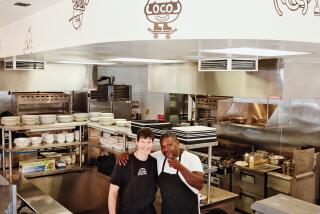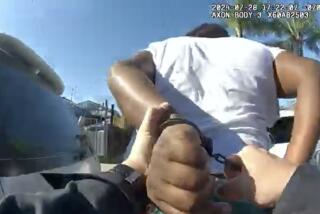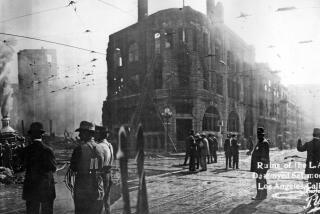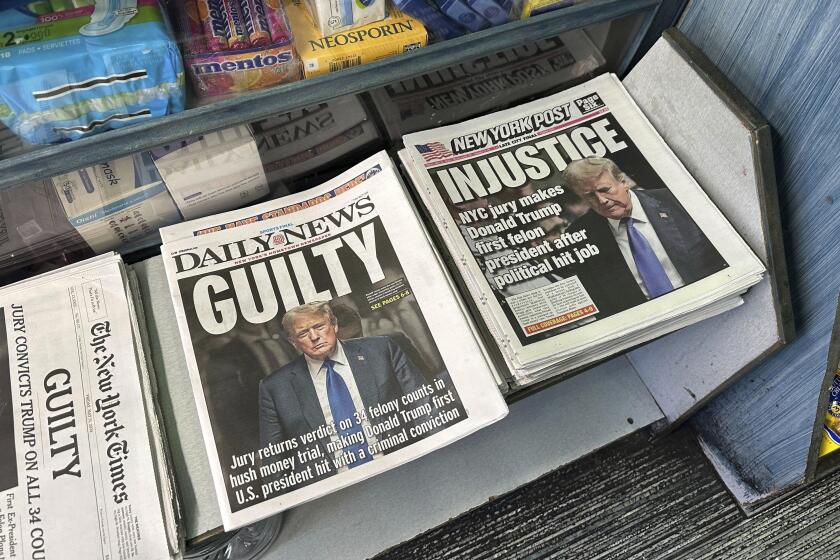Op-Ed: Joseph Wambaugh: The Watts riots — from inside a black-and-white
- Share via
At 7 p.m. on Thursday, Aug. 12, 1965, about 2,000 people gather at 116th and Avalon. Tension is still high after the mob violence of the previous night following the arrest of an alleged drunk driver, but the people are not rioting.
A short time later, random shots are fired at a police vehicle on Imperial Highway, but there are no reports of massive rioting. Many of the officers in police divisions north of 77th Street Station listen on police radios and do not believe that the volatile unrest near Watts will spread to other parts of South Los
Angeles.
The next afternoon, however, calls go out to officers at home, even those who work plainclothes assignments, ordering them to report to 77th Street Station in uniform. The nameless voice on the line adds: “Leave the necktie and soft hat but bring your helmet and baton. You’re about to witness anarchy.”
It’s 6 p.m. at 77th Street Station, and officers are arriving from divisions all over the city. A desk officer manning two phones waves them to the watch commander’s office. The WC only asks for a name, serial number and division as he sends the cops out into the field, telling them, “Pick up two boxes of .38 ammo from the sergeant. Make sure there’s one shotgun in your car and an extra box of rounds.”
Going down the roster, he mumbles two names to the most recent arrival and provides a car number. “You’ll be known as Twelve-Adam-45. Look for your partners in the parking lot.”
The WC is asked if all personnel are working three-man cars. He nods and says, “You’ll wish it was six.”
The three helmeted partners meet up in the parking lot. They don’t know one another or the geography in this part of southeast L.A. The oldest, a Korean War veteran, has a sudden gastrointestinal attack and has to run back to the station. While he’s gone, the two younger cops elect him to drive; nobody wants that job. One of them agrees to sit in back and navigate the unfamiliar streets with a map book.
The sun is still high and they are not three blocks from the station, passing mobs on both sides of Broadway, when a chunk of concrete smashes the rear window of their car. A cheer goes up from 100 people at the corner of 81st Street, daring them to stop and investigate. Another 100 yell and jeer from the opposite corner.
The cop riding shotgun turns up the radio and they hear the frantic female operators:
“Officer needs help, Manchester and Broadway! Officer needs assistance, one-O-three and Grape! Officer needs assistance, Vernon and Central! Looting, five-eight and Hoover!”
Another operator cuts in: “Looters, four-three and Main! Looting, one-O-five and Avalon! Shots fired, four-three and Main!”
And then something happens that none of the cops in the car has ever heard before. The stress overload gets to one of the operators and she starts sobbing.
A third female voice takes over the litany of chaos: “Officer needs help, Florence and Main! Looters, one-O-two and Central! Officer needs assistance, Slauson and Vermont!”
Littered streets. Debris everywhere. Screaming, chanting crowds everywhere. Mobs surge in human tidal waves, breaking plate-glass windows of commercial buildings, swarming inside. Men, women and children carry away anything of value.
It’s early evening now, and ambulances and fire engines roar past, but surprisingly few black-and-whites. The police are so vastly outnumbered that they are protecting one another instead of attempting to answer radio calls. It somehow feels cowardly to arrest a rioter and escape the streets for a quick booking. It seems akin to running away from danger instead of running toward it.
The older cop in the trio spells it out in Korean War terms: “The hell with dying on some nameless hill. Your first duty is to protect the guys in the trenches with you.”
The cop in the back seat closes the map book and says, wild-eyed: “So what’re we doing then? Why respond to calls? There’s a dozen felonies taking place everywhere you look! I’m sick of this! Just pick your spot where they got some coppers surrounded and let’s go all kamikaze!”
That’s when they see the first building explode in flames. Looting is no longer enough for the multitudes. The fires are starting. Soon the smell of fire permeates everything. The sun sets but the temperature rises, along with the fear level. The roar of the flames makes the raging mobs scream louder.
The nameless voice that ordered the cops to 77th Street Station that afternoon was right. They are witnesses to anarchy.
Joseph Wambaugh, a former LAPD sergeant, is the author of 21 books of fiction and nonfiction about police and crime. He was assigned to Juvenile Division in 1965.
Follow the Opinion section on Twitter @latimesopinion and Facebook
More to Read
A cure for the common opinion
Get thought-provoking perspectives with our weekly newsletter.
You may occasionally receive promotional content from the Los Angeles Times.










